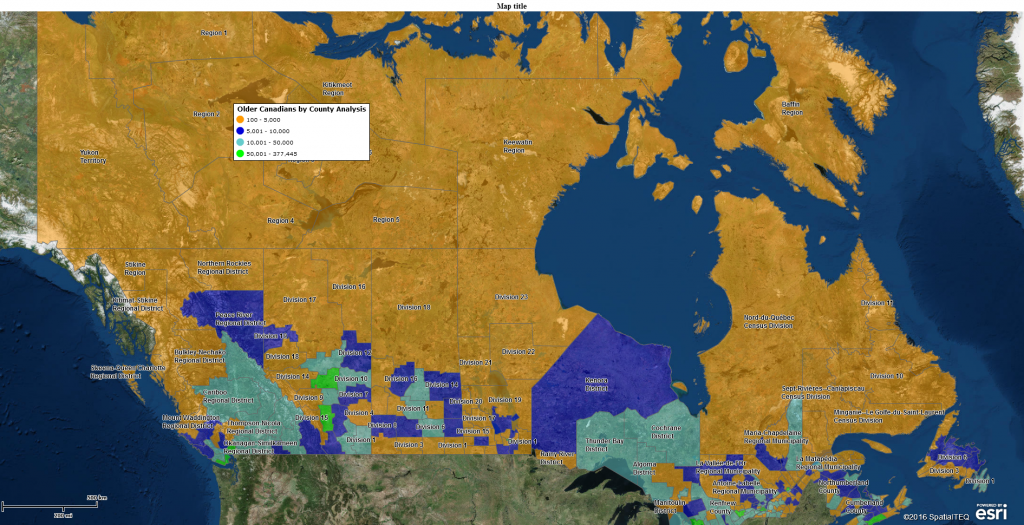Established businesses and start-up businesses are generally run by smart people. Unless you’re selling water to long distance runners in the desert, it takes careful thought, planning, and vision to run a successful business. Many businesses have been successfully managed for years by smart people without the help of business mapping software. So, what’s the big deal about location-based visualization and planning tools?
The short answer is information, perspective, and spatial vision. Below is a longer answer.
Informed Decision-Making
All that careful thought, planning, and predicting the future leads to good (and bad) decisions. Business decisions set policies. Policies are implemented by trusted employees and partners. You could say that the previous three sentences describe all business. Ideas and plans are hatched, decisions are made, and policies are implemented. Pretty simple, and a sure-fire success when there is no competition.
Dealing with Competitors
But alas, you do have competition. Blockbuster had Netflix, Walmart has Target, Amazon has Walmart, and your company has its competitors too. To deal effectively with competition you’re going to require reliable information. Information helps managers make decisions about sales, products, distribution, marketing, and every other aspect of business. When plenty of pertinent information is presented to a planning session, the decision-making improves.
So, when smart business managers lead planning sessions in preparation for big decisions, they gather all the information they can. They want the sales forecast, the marketing plan, the product plan, the service plan, the budget, production requirements, and they may develop a SWOT analysis too.
Make a New Plan Stan
All these plans and analysis are studied to determine what the next steps should be after answering questions like these:
- Is the business expanding or contracting? Do we need more room or less room?
- Are there new, untapped markets we should be entering?
- Are there new geographical areas we should be exploring?
- Is the sales team focused on the right goals and objectives?
- If we invest in more salespeople, how soon would that investment payback?
- Who are our major competitors, where are they located, and how do we beat them?
- Are we able to take full advantage of our most lucrative opportunities in sales, production, and facilities?
I am sure there are many more questions and opportunities that businesses attempt to answer through all sorts of business analysis. But one thing most of these key questions have in common is that they can be tied to a location component. By leveraging the location components inherent in your business data, you gain spatial vision and a competitive edge.
Location Component
A location component is an aspect of your business data that can be tied to a location on Earth. (We’ll keep off-planet locations out of the picture for now.) Customers, competitors, and prospects have addresses. Sales data is often compiled by address, but it could be aggregated by ZIP code, county, or even territory. Consumer purchase patterns tend to be viewed geographically.
Product use can be and should be tracked by area. Think about it. A product might sell really well in a ZIP code made up of specific demographics. By including product use by ZIP code in your business analysis you’re able to expose unexplored and fertile ZIP codes across the country for that very same product. That’s leveraging the value of location.
Physical locations by latitude and longitude are applied by many businesses to track field assets such as ATMs, billboards, candy machines, and thousands of other point-of-sale or point-of-marketing elements. When you understand the physical realities surrounding these field asset locations, decisions focused on assets and asset management improve. Those physical realities include traffic, weather, demographics, and many other area aspects pertinent to your business.
Location data visualized transforms data into good decisions. Good decisions drive growth, minimize liabilities, and maximize profit. Pass the address data, please.
Through the visualization of location-based business data, online mapping software generates answers that inform strategic and tactical decision making. These map visualizations tie your business metrics to areas of interest that impact your company’s future. Map visualizations also ingest multiple, and possibly disparate, datasets into one analysis matrix based on geography.
Where common business data analysis might be spreadsheet-based or a pivot chart variation, business mapping is geography-based. Geography-based data analysis unlocks new avenues of analysis and business modeling. This spatial vision includes:
- Defining an addressable market
- Creating market profiles by ZIP code or county
- Sales territory alignment for sales planning and sales accountability
- Sales experience sharing through shared map discussions
- Expansion planning assessments
- Competitor analysis
- Strategic planning SWOT maps
- Visualization histories for tracking company progress over years
All these geographic perspectives lend credible background information and possibly crucial new perspectives for improved decision making, expansive strategic planning, or for establishing clear goals and objectives in a five-year plan.
Vibrant businesses and smart business people require as much information as they can to generate the wisest business decisions possible. Location-based data is one of the critical elements contributing to a healthy decision-making process. Call it what you will – location awareness, situational awareness, or just being wide-awake.
Make sure your business strategy sessions and decision-making processes are supported by tools like business mapping software. Available as affordable cloud-based services, business mapping tools are simply a must-have option.
Our world changes rapidly due to the nature of technology. Don’t get left behind. Harness technology and location-based data to your competitive advantage. Be that smart businessperson proactively planning your business’s future by seeking reliable information, new perspectives, and generating spatial vision.
Win a $20 Gift Card! Refer a business associate to Map Business Online in exchange for a $20 Amazon Gift Card!
Find out why over 25,000 business users log into www.MapBusinessOnline.com for their business mapping software and advanced sales territory mapping solution. The best replacement for Microsoft MapPoint happens to be the most affordable.
Contact: Geoffrey Ives geoffives@spatialteq.com or Jason Henderson jhenderson@spatialteq.com


